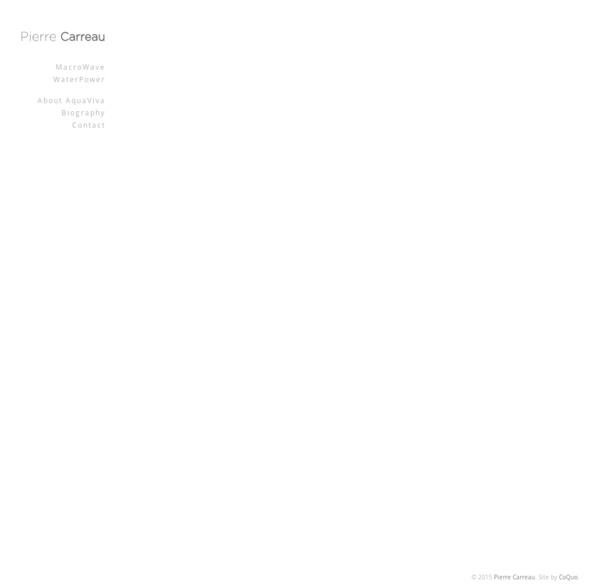



Kris Graves Discovered Missing, 2013 Öxarárfoss, 2013 Sirry and Haukur’s Backyard, 2013 Jökulsárlón Ice, 2010 Road to Skaftafell, 2010 Whiteout, 2013 Near Reydhara #1, 2010 Hverarönd #2, 2010 Near Vik #1, 2010 Near Vik #2, 2010 Þingvellir, 2012 Near Vik #3, 2012 Vik, 2010 Gullfoss, 2012 Hverarönd #1, 2010 Kálfatjarnarkirkja, 2012 Vik in Winter, 2012 Viðey, 2012 Sarah at Svínafellsjökull, 2012 Jökulsárlón Ice, 2012 Kirkjubæjarklaustur, 2012 Near Reydhara #2, 2010 Route 36, 2012 Horsies near Kálfatjarnarkirkja, 2012 Entrance to Þingvellir, 2012 Sunset from Hótel Brú, 2013 Borgarnes, 2012 Hverarönd #3, 2013 Viðey Ferry Terminal, 2012 Kerið, 2012 Sleðbrjótur, 2013 Dyrhólaey Rock, 2012 Jökulsárlón Glacier Lagoon, 2013 Dyrhólaey, 2012 Over Skagaströnd, 2013 Hverfjall, 2013 Matthew, Iceland, 2013 Reynisfjall, 2013 Svínafellsjökull, 2013 Mývatn Sunset, 2013 Skagaströnd, 2013
【ありがたや】After Effectsで作る、炎、水、氷、雷、風、土属性のエフェクト。サンプルaepデータもあるでよ | CGトラッキング 世界のCGニュースを集めてみる 2014年5月14日、本日3度目の更新です。 After Effectsで作られた、炎、水、氷、雷、風、土属性のエフェクト。 これらのエフェクトの作成方法等がまとめられた『バカ・アフター』さんのサイトです。 サンプルaepデータも用意されており、非常に有難いチュートリアルとなっています。 遊技機等のCGに応用出来そうな物ばかりある為、必見。 After Effectsで作られた炎エフェクト 炎(標準エフェクトのみ) Paticularを使った炎 Particularで作った火の玉 Formを使った炎 After Effectsで作られた水エフェクト 水面(標準エフェクトのみ) Particularで作った水のようなもの Element3Dで作った水のようなもの After Effectsで作られた氷エフェクト 水晶(標準エフェクトのみ) Mirで作る氷のようなもの After Effectsで作られた雷エフェクト Mirで雷 エフェクトっぽい風の表現 Particularで作る竜巻 <a href=" After Effectsで作られた土エフェクト Mirで作った大地と川 Element3Dによる地面破壊効果 サンプルaepのダウンロードや完成動画はコチラから バカ・アフター 雑記 属性表現の部屋 また、各エフェクトの制作のコツ等も書かれている為、非常に参考になり、また応用も出来るかと思います。 関連記事
Focus Numérique - 1er magazine sur la photo et vidéo numérique 【楽天市場】「人をダメにするソファ」 マイクロビーズクッション 『mochimochi』 もちもち キューブLサイズ 日本製 国産 ビーズクッション ビーズソファ フロアソファ ソファー 座イス 一人暮らし 新生活 もっちり マカロン【送料無料】【RCP】エムール【P12Sep14】:エムール -EMOOR 布団・家具- お支払方法について詳しくはこちら クレジットカード・銀行振込・郵便振替・コンビニ決済・コンビニ後払い・楽天バンク決済・Edy決済がご利用可能です。 クレジットカード決済 コンビニ決済 NP後払い決済 ※コンビニ後払いは別途手数料をご負担いただきます。 銀行振り込み・郵便振替 ※銀行振込・郵便振替の手数料はお客さま実費ご負担となります。 楽天バンク決済 ※決済手数料はお客さまご負担となります。 楽天Edy決済 営業時間 インターネットでのご注文は 24時間 受け付けております。 TEL: 042-686-0173 営業時間: 10:00~17:00 定休日: 土日祝・カレンダー記載の休日 ご注文確認メール、お客様から頂きましたメールへのご返信は、2営業日以内に返信させて頂きます。 返品・交換について詳しくはこちら ●不良品・ご注文と違う商品が届いた場合 商品が破損・汚損していた場合、ご注文の商品と違う商品が届いた場合には商品のお届け後8日間以内にご連絡ください。 ●お客様都合の場合 お客様のご都合による商品の交換及び返品は、商品のお届け後8日間以内にご連絡ください。 レビューについて ご購入された商品のレビューは、お客様のご購入履歴から書き込めます。 ご注文から商品発送までの流れ詳しくはこちら ※キャンペーンによる請求金額の修正は当店からのメールにて修正させて頂きます。 配送について詳しくはこちら 送料は地域によって異なりますのでご注意ください。 送料込み商品と送料別商品を同時購入の場合 発送元が複数ございます関係で、特別な記載のある場合を除き、送料別商品の送料は頂戴いたします。 個人情報について お客様の個人情報を商品の発送、入金管理の目的で収集・利用させていただき、目的の範囲を超えて利用することはありません。
In A World Without Words Focus sur la photographe coréenne Ina Jang basée à Brooklyn qui porte avec sa dernière série « In a World without Words » un véritable regard minimaliste et en deux-dimensions sur les sujets qu’elle capture. Des clichés figuratifs et étranges d’une grande beauté, à découvrir en images dans la suite de l’article. STUDIO ERWIN OLAF Praxis effect The shock waves from the explosion of Praxis in The Undiscovered Country, the film for which the effect was named The Praxis effect (also known as the Praxis explosion or Praxis ring) is a special effect sometimes used in science fiction movies and other visual media. The effect is most commonly seen following the explosion of a large object in space — a ring or disc of matter or energy expanding out from the destroyed object. It is named after the explosion of Praxis in the 1991 science fiction film Star Trek VI: The Undiscovered Country. History[edit] The first acknowledged use of the effect was in the 1991 science fiction film Star Trek VI: The Undiscovered Country. Physics[edit] Astronomer Philip Plait has described the explosion and resultant shock wave as "the most dramatic effect ever filmed", but states that in reality it would be more likely for the explosion seen in Star Trek VI: The Undiscovered Country to generate a spherical shock wave. References[edit]
News | Cuba Gallery New York Travel Photography Posted on April 20, 2014 by Andrew Smith | 0 Comments